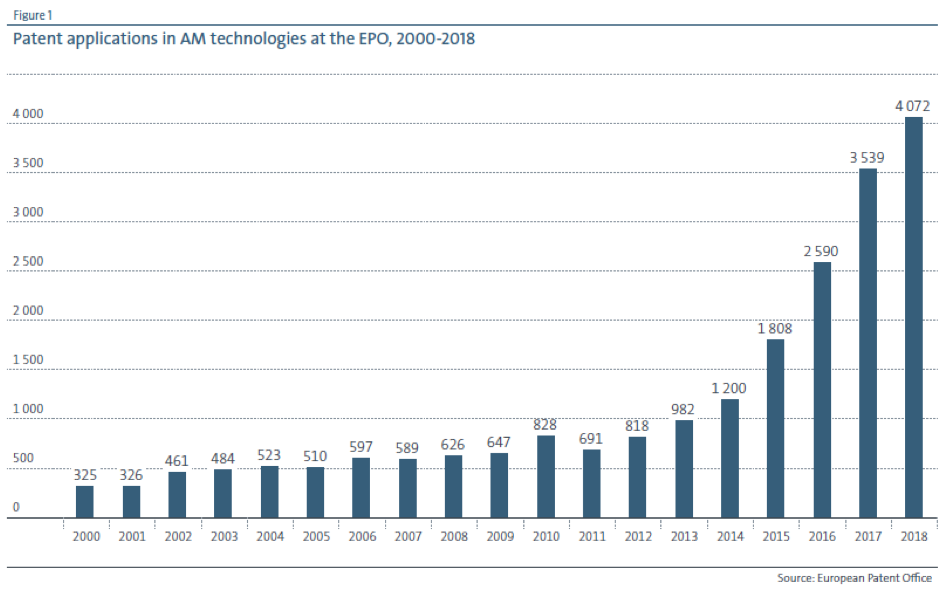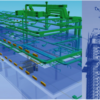Trumpf and Heraeus AMLOY: Two IP strategy pros team up for industrial 3D printing of amorphous metals
3D printing is primarily a digital technology, and as such one of the key drivers of the Fourth Industrial Revolution. The challenges of the digital economy of the 21st century in the context of the fourth industrial revolution require a constant development of new materials to enable complex applications. This leads to productivity gains and extensive improvements by using innovative materials such as amorphous metals, combined with outstanding process control. Amorphous metals, also known as metallic glasses, are formed by the shock freezing of metallic melts. The atoms have no opportunity to form a crystalline lattice and solidify in a disordered manner (amorphous). Since amorphous metals do not have lattice structures, no grain and phase boundaries are formed. The material shows excellent mechanical properties, has above average corrosion resistance, is biocompatible and behaves isotropic. TRUMPF and Heraeus AMLOY have begun working together on the 3D printing of amorphous metals. Their goal is to establish the printing of amorphous parts as a standard production method on the shop floor by improving process and cost efficiencies. As the technology matures, it is estimated that 3D printing could capture 5% or more of the global EUR 10.7 trillion (USD 12trillion) manufacturing industry.
In addition to creating highly robust parts, 3D printing also gives engineers more freedom in the design process. A number of areas could benefit from 3D printing of amorphous metals. Key examples include parts that are subject to significant stresses and lightweight design in sectors such as aerospace and mechanical engineering. Both companies have also already shown an extremely high degree of IP strategic proficiency.
 Heraeus AMLOY, has created an instrument for developing new business models with IP design. The introduction of IP design has made available an instrument that allows new business models to be developed and protected in different scenarios. IP design helps management to implement the five most important leadership tasks of digital leadership in daily practice: driving change, making staff contributions transparent and enabling recognition, promoting interdisciplinary cooperation, promoting staff development, and providing orientation. This experience is described in the MIPLM Industry Case Study “From amorphous metals to digital business models”, available at CEIPI IP Business Academy.
Heraeus AMLOY, has created an instrument for developing new business models with IP design. The introduction of IP design has made available an instrument that allows new business models to be developed and protected in different scenarios. IP design helps management to implement the five most important leadership tasks of digital leadership in daily practice: driving change, making staff contributions transparent and enabling recognition, promoting interdisciplinary cooperation, promoting staff development, and providing orientation. This experience is described in the MIPLM Industry Case Study “From amorphous metals to digital business models”, available at CEIPI IP Business Academy.
Trumpf is also attending the DIN77006 training program with the IP Business Academy.
This cooperation is so fascinating because additive manufacturing – more commonly known as 3D printing, may potentially redesign entire industry value chains in large swathes of the global manufacturing industry. At the same time, it is a field of very high patent propensity and harsh legal disputes. Both companies have already shown that they know how to deal with IP.

 It is also a fascinating technology, drawing on the most advanced digital technologies to craft objects of unmatched complexity in an ever-growing variety of materials – ranging from concrete to living cells. This EPO study reveals a recent surge in additive manufacturing innovation in countless industry areas, calling for greater collaboration between the impacted sectors – like this cooperation between the material expert Heraeus AMLOY and the machine manufacturing experts from TRUMPF.
It is also a fascinating technology, drawing on the most advanced digital technologies to craft objects of unmatched complexity in an ever-growing variety of materials – ranging from concrete to living cells. This EPO study reveals a recent surge in additive manufacturing innovation in countless industry areas, calling for greater collaboration between the impacted sectors – like this cooperation between the material expert Heraeus AMLOY and the machine manufacturing experts from TRUMPF.
While 3D printing was originally used for prototyping, its value is now seen in making industrial manufacturing more efficient, by using fewer resources while making it easier, cheaper and faster to build complex shapes and custom one-off designs. 3D printing has the potential to redesign entire industry value chains, and will oblige companies to rethink their distribution models and to adapt to new forms of competition, while facing the challenge of creating appropriate legal frameworks to safeguard competition.



